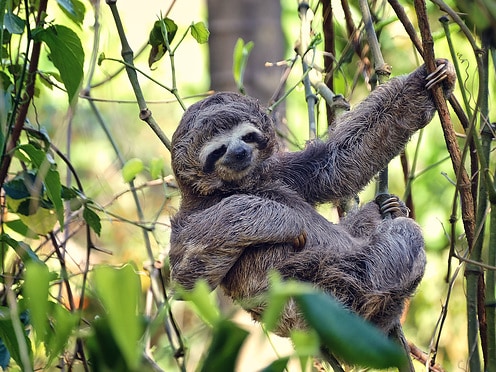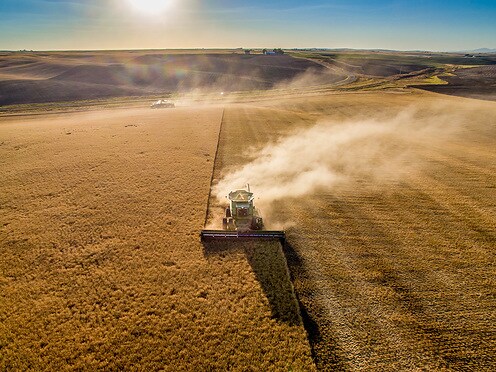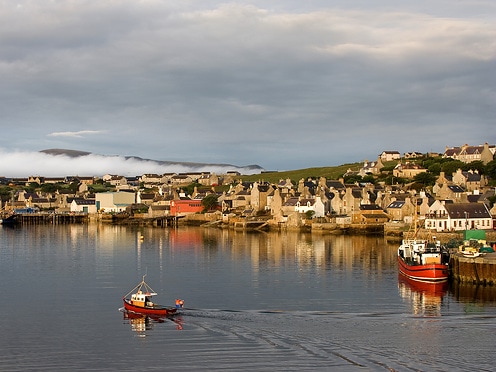Climate change: 5 facts
This article features:
It’s been scientific consensus for decades now: man-made climate change is threatening eco-systems around the world. Above all, greenhouse gas emissions have a major climate impact. Here’s what’s already changed – and what we can still do to tackle it.

Practically everyone is talking about climate change. Whether among family and friends or in public debate – the man-made effects of climate change are shaping the discourse. Misinformation abounds despite all scientific proof to the contrary. Only when we deal with cold hard facts can we find solutions for this global challenge. We’ve put together a list of five facts about climate change.
1. Climate change is real
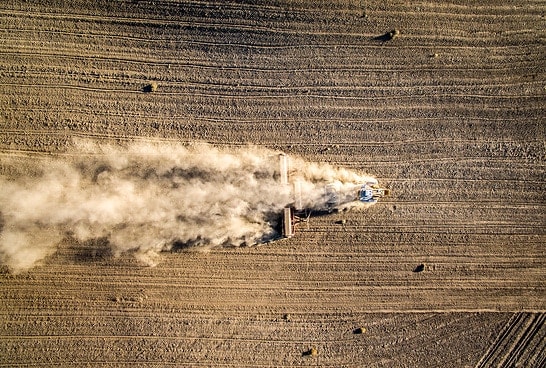
Our planet has got almost 1.1 degrees Celsius warmer since the beginning of industrialisation. In Germany, temperatures have even risen by two degrees Celsius. The main cause of this rapid rise is greenhouse gas emission, which is produced by combustion of fossil fuels such as oil or coal, and in industrial agriculture. In its paper “Basisfakten zum Klimawandel, die in der Wissenschaft unumstritten sind” (Basic facts about climate change, undisputed by science), the Deutscher Wetterdienst (German Meteorological Service) pointed out that every decade since the 1980s has been hotter than the previous one. The ten hottest years since records began have all been observed by scientists since 1998. Researchers believe that temperatures have never been so high in the history of human civilisation, i.e. within the past 12,000 years.
Our planet has got almost 1.1 degrees Celsius warmer since the beginning of industrialisation.
A glimpse back in time shows just how accurate climate modelling predictions can be: a range of computer models already correctly predicted current levels of global warming back in the 1970s and 1980s. The Intergovernmental Panel on Climate Change (IPCC) also anticipated today’s rise in temperatures in its 1990 assessment report. It’s clear that climate change is real and progressing quicker and more dramatically than ever before. Yet humans, plants and animals alike are barely capable of adapting to such changes.
2. Climate change is human-made

Since the 1850s, the concentration of carbon dioxide in the air has increased by almost 50 per cent. The higher the concentration of CO2 in the atmosphere, the more the planet heats up. While the concentration was still around 288 ppm (parts per million) in 1870, it has now reached 411 ppm. In addition to rising emissions, vast swathes of forest are being chopped down or burned in areas such as the Brazilian Amazon and Indonesia. Swamps have been drained and land use has changed, too. These major interventions in sensitive ecosystems also increase the concentration of harmful greenhouse gases in the Earth’s atmosphere. The result: there is much more CO2 in the atmosphere today than there has ever been in the previous 800,000 to three million years of the Earth’s history.
Today, there is much more CO2 in the atmosphere than there has ever been in the previous 800,000 to three million years of the Earth’s history.
3. Climate change threatens our very existence
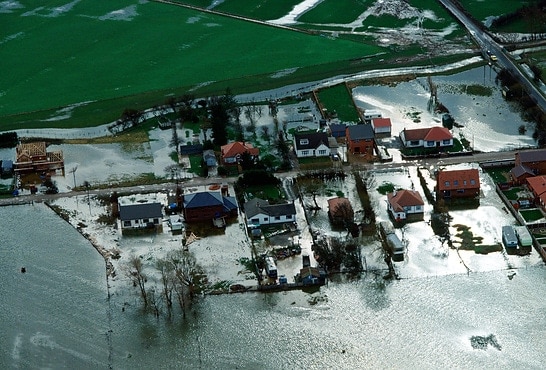
Catastrophic flooding in Germany, deluges in Australia, storms in the Caribbean and the US, droughts, and heatwaves on every continent: extreme weather conditions are on the rise. For instance, the US state of California has been in a constant state of drought since 2000. Researchers at Harvard University and the University of Washington have also calculated that by 2050, the number of days with dangerously high temperatures in the northern hemisphere are set to more than double the equivalent figure for 1979 – 1998. Dry spells are generally longer, while heavy downpours and floods are more frequent, leading to huge humanitarian and economic impacts. According to the World Meteorological Organisation (WMO), since 1970, more than two million people have fallen victim to weather events caused by climate change – 90 per cent of them in developing countries. In this period, damage worth over USD 3,600 billion has been caused.
Days with dangerous heat will double by 2050.
These changes will have an impact on food and water supplies. Many areas of the planet are already affected by water and food shortages caused by climate change today. Where harvests fail and extreme weather threatens livelihoods, migration is the result. According to the United Nations, in 2021, around 23.7 million people had to leave their homes due to extreme weather conditions – some permanently. Accordingly, natural disasters cause more than three times as many displacements as (military) conflicts and violence. When an increasing number of people compete for increasingly scarce natural resources, there’s huge potential for conflict. Many researchers believe that in future, wars will primarily be waged over water and access to food supplies.
4. Climate change is melting the ice
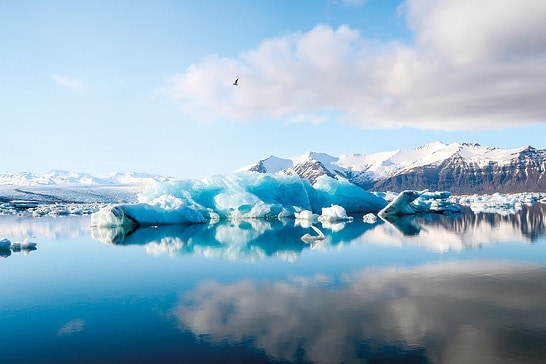
In particular, the area around the Arctic ice cap is warming faster than the rest of the world: the average temperature at the Arctic rose by 3.1 degrees Celsius from 1971 to 2019. The area of Arctic sea ice almost halved in the period from 2001 to 2019 compared to 1980 to 1989 – from 7.3 million square kilometres to 4.2 million. Unusually high temperatures are also being observed at the South Pole. The Argentinian station Esperanza recorded a temperature of 18.3 degrees Celsius for the very first time in February 2020.
Sea levels are rising as a result of melting ice at the North and South Poles and in Greenland. According to the German Meteorological Service, levels have risen by around 16 centimetres since 1900. On every continent, the Earth’s ice is melting. With a few exceptions, glaciers everywhere are shrinking.
Arctic sea ice has shrunk by almost 50 percent in the period from 2001 to 2019.
But ice and snow reflect the sun’s rays, protecting regions from warming. As a result, the melting of ice caused by climate change also contributes to heating the planet. Permafrost soil is also slowly thawing. This contains organic materials, methane and carbon. The breakdown processes release greenhouse gases, with far-reaching consequences for the climate. Researchers predict that around 60 to 80 billion tons of carbon will reach the Earth’s atmosphere by 2030 as a result.

Just half a degree Celsius less global warming can make a big difference.
5. We can still do something about climate change

With the climate goals agreed in the 2015 Paris Climate Agreement, a total of 196 nations set out to slow down global heating and limit it to less than two degrees Celsius in comparison with pre-industrial levels. Some of the consequences of global climate change can no longer be reversed. However, even half a degree Celsius less can make a huge difference. The Intergovernmental Panel on Climate Change set out the ways and means for limiting global heating to 1.5 degrees Celsius in its 2022 special report. To sum this up: we have to do more, and faster, than before. Global CO2 emissions must be cut to net zero by the middle of this century. The same goes for other greenhouse gases like nitrous oxide and methane. Without rapid and far-reaching changes to our energy system, agriculture, cities, infrastructure and industry, however, it won’t succeed. Nevertheless: we can still stop climate change at a point where the world remains habitable for humans. No matter how big or small a country or individual’s contribution to global greenhouse gas emissions – we can all do something. From sustainable consumption, e-mobility and expanding public transport to renewable forms of energy like hydrogen: there are all kinds of measures, big and small, that can help slow down climate change and achieve the Paris climate targets.



